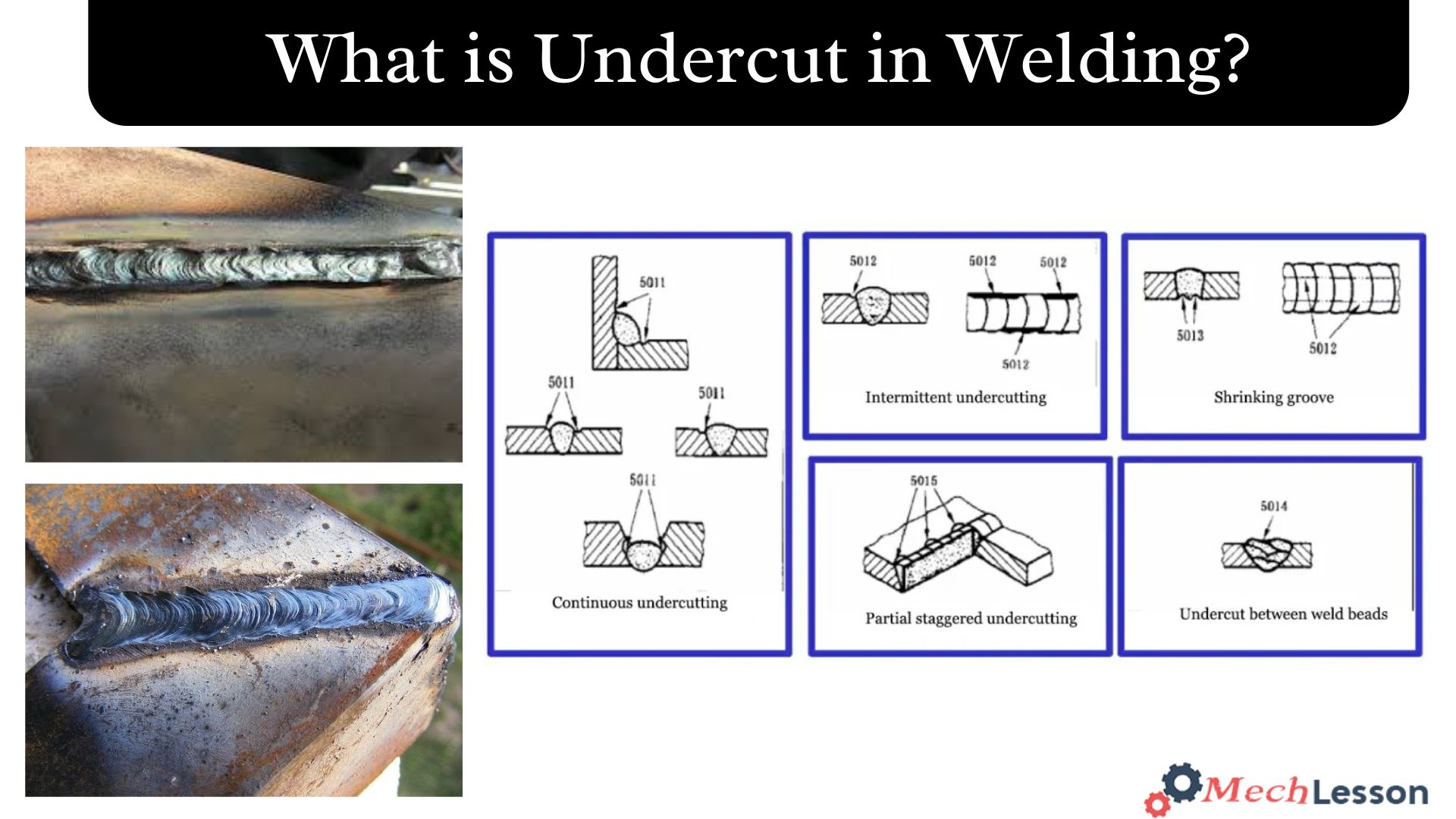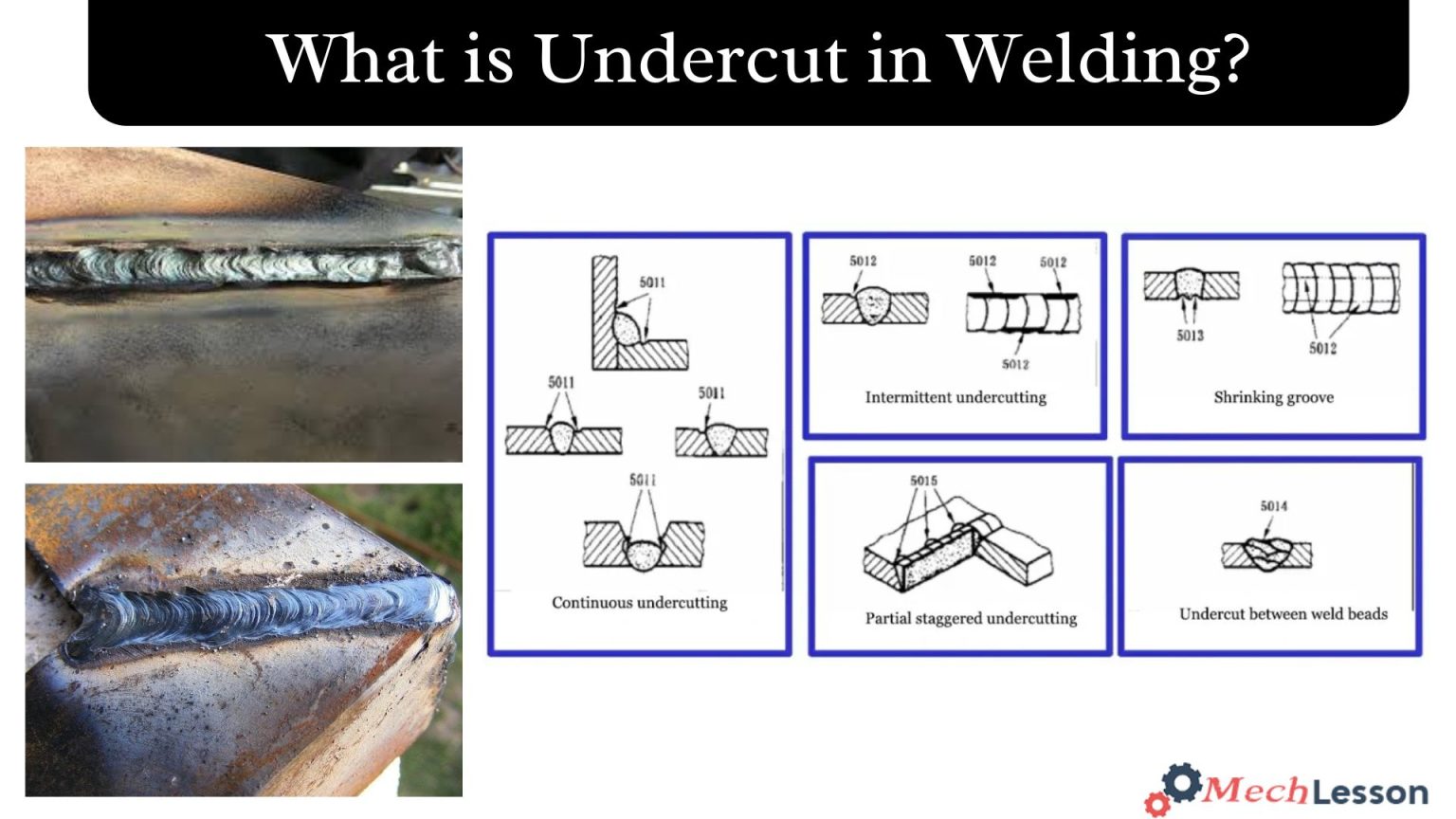Weld joints must be strong in every application and industry. Weld undercut, a defect that is often encountered by welders and can weaken connections and encourage corrosion, is one issue that can compromise the quality of a weld.
Well, in this reading, we’ll explore what undercut in welding is, its diagram, types, causes, effects, and prevention.
Let’s begin!
Read about Welding Bead with this detailed guide!
What Is Undercut in Welding?
A welding undercut is a weld discontinuity known to happen when the base metal has not been sufficiently filled back in by the relevant welding procedure, leaving a groove or dip on the finished weld’s edge.
Depending on the particular application, undercutting can have a variety of effects on the quality of welded connections. This unwanted groove in the weld bead poses a serious risk to the joint’s structural integrity since it can weaken the final weld.
An undercut can also provide a space for impurities to accumulate in applications such as process pipework, which might significantly speed up corrosion rates. A picture of an undercut in a tube to plate connection may be found below. This assembly made use of both flare bevel groove weld connections and fillet welds.
Types Of Undercut
These are the following types of undercuts:
1. External Undercut
On a welded joint’s outside, there is an external welding undercut. It is usually noticeable upon visual inspection and is identified by a groove or dip around the edge or “toe” of the finished weld.
This flaw occurs when the joint is not sufficiently filled during the welding process, creating an undercut or concave region that may reduce the load-bearing capacity and structural integrity of the weld.
2. Internal Undercut
Internal welding undercut is invisible to the naked eye and happens inside the weld itself, below the surface. Internal undercut may be concealed within the joint, in contrast to external undercut, which is visible on the weld’s outside.
It is distinguished by a depression or groove that penetrates the base material or the inside of the weld. Since an interior undercut would not be apparent in a finished weld, a radiographic investigation could be required to detect its presence.
Causes of Undercut in Welding
A variety of causes, either alone or in combination, can result in undercut. Undercut can result from high heat during the welding process because it melts and erodes the base metal too much. Similarly, an excessively high travel speed may reduce the amount of time available for appropriate filler metal deposition, which may lead to undercut.
This defect may also result from the use of a welding electrode or filler metal that is too small in comparison to the dimensions of the junction. Last but not least, poor joint preparation—such as large gaps or root openings—can foster the development of undercuts. Achieving high-quality, flawless welds requires identifying and resolving these contributing issues.
Read about What are the Five Types of Welding Joints? with this detailed guide!
Effects Of Undercut Welding
All of the factors that affect the welding process, such as electrode size, the thickness of the base metal to be welded, the amount of amp and volt needed, and the position and advancement of the weld, should be included in a well-written welding protocol. The final product may be undercut if these requirements are not appropriately handled and followed.
Diagram

How to Prevent Undercutting Welding
Several strategies and tactics can be used to avoid undercutting the finished weld connection. A sound weld free of undercut may be achieved by selecting the appropriate welding method for the joint being welded, comprehending and following its criteria, and so on.
Selecting The Proper Welding Method
The material being welded, the application, thickness, joint arrangement, and other factors all play a role in choosing the best welding procedure to avoid undercut. Numerous widely used welding procedures include built-in traits and strategies that can be used to successfully reduce or avoid undercut.
Read about 13 Types of Welding Defects, Their Causes and Remedies with this detailed guide!
TIG Welding
TIG welding is a great method for removing undercuts in a variety of applications. Compared to many other procedures, TIG provides a higher degree of operator control, which can remove the chance of undercutting.
Large gaps can even be filled in a single weld pass without undercutting if the welder uses the proper size filler metal, which allows them to gauge how much is being deposited into the weld joint.
Stick Welding
By selecting the electrode size that is appropriate for the thickness of the material and the weld location, SMAW or “stick,” may be used to create welds with the correct profile. To guarantee a correct weld profile free of undercut, stick welding procedures like appropriate travel and work angle are essential.
Another important factor in obtaining an undercut-free weld is arc length. The amount of weld metal deposited into the weld and the mechanism of arc transfer will be significantly impacted by an arc length that is either too short or too lengthy.
MIG Welding
By setting up appropriate welding settings and keeping an eye on them during the welding operation, MIG welding may be utilised to successfully remove undercuts. Controlling the wire speed will help guarantee that the weld junction is receiving enough filler metal. This will provide an undercut-free weld when done correctly and in conjunction with all other considerations.
Since MIG welding is “semi-automatic,” the welder’s ability to alter welding settings after the arc has been formed will be restricted. It is essential to provide a precise fit-up of the weld joint with little variations in parameters such as root opening, bevel angle, and others.
Adjusting welding parameters
A competent operator following the welding process’s guidelines will provide a sound weld with the right profile. The kind and thickness of the material, the shape of the weld joint, the welding locations, the welding procedure, and the electrodes and filler metals to be used must all be assessed and taken into account before the welding starts.
Read about Plasma Arc Welding (PAW) with this detailed guide!
Appropriate voltage and amperage
The correct choice of either voltage for MIG or FCAW welding or amperage for SMAW and TIG welding determines the current utilised in welding. Excessive amps or volts will cause the weld puddle to “heat up,” which will bring more base metal to the molten state and result in insufficient filler metal being deposited, which can only cause undercut.
Appropriate Travel Speed
To achieve a suitable weld profile free of undercut, the right travel speed is essential. An undercut may emerge if the travel speed is too high since there won’t be enough weld metal deposition in the joint. A good weld depends on finding the ideal balance between travel speed and weld deposition rate.
Expert Use of the MIG Gun, Torch, Electrode Holder, or “sticker
An incorrect work angle or travel angle is one of the main causes of undercut. This angle affects the amount of molten weld metal deposited in the joint and might change based on the welding location and procedure. An improper angle frequently results in an undercut and a poor weld profile.
How the molten weld metal is placed into the joint is greatly influenced by the electrode’s angle. This component is also affected by the particular welding procedure and the welding location. An insufficient welding profile that does not completely fill the joint due to an inappropriate electrode angle can often result in an undercut.
Using the Right Tools and Equipment
Naturally, achieving a good weld will be aided by having the proper tools and equipment to prepare a weld connection. Make sure you have a torch, grinder, or other instrument that can produce the bevel appropriately if the joint calls for one to be formed at a particular angle.
Tools for measuring and confirming the angle may possibly be part of this. It may be challenging to fill in a poorly prepared weld joint at an incorrect angle, which frequently results in undercut signs.
Read about Welding with this detailed guide!
FAQs
What is the reason for undercut?
It is caused by excessive welding speed and excessive welding current. Since it will create a notch effect in dynamic loads, this type of error is one of the major errors that will negatively affect the installation. Undercut usually occurs parallel to the weld seam.
How do you prevent undercuts in welding?
Improve your welding technique or speed: You need to practice your welding skills and develop a consistent technique that can create smooth and even weld beads. You should avoid weaving or oscillating the electrode too much, as this can create uneven heat input and cause undercutting.
What is the difference between undercut and underfill?
Undercut is a groove melted into the base metal adjacent to the weld toe or weld root and left unfilled by weld metal. Underfill is a condition in which the weld face or root surface extends below the adjacent surface of the base metal.
How much undercut is allowed in welding?
According to the American Welding Society (AWS) standards, an undercut should not exceed 0.2 times the thickness of the base metal. If the undercut is deeper or wider than this, it may affect the strength of the weld joint and render it unacceptable.

